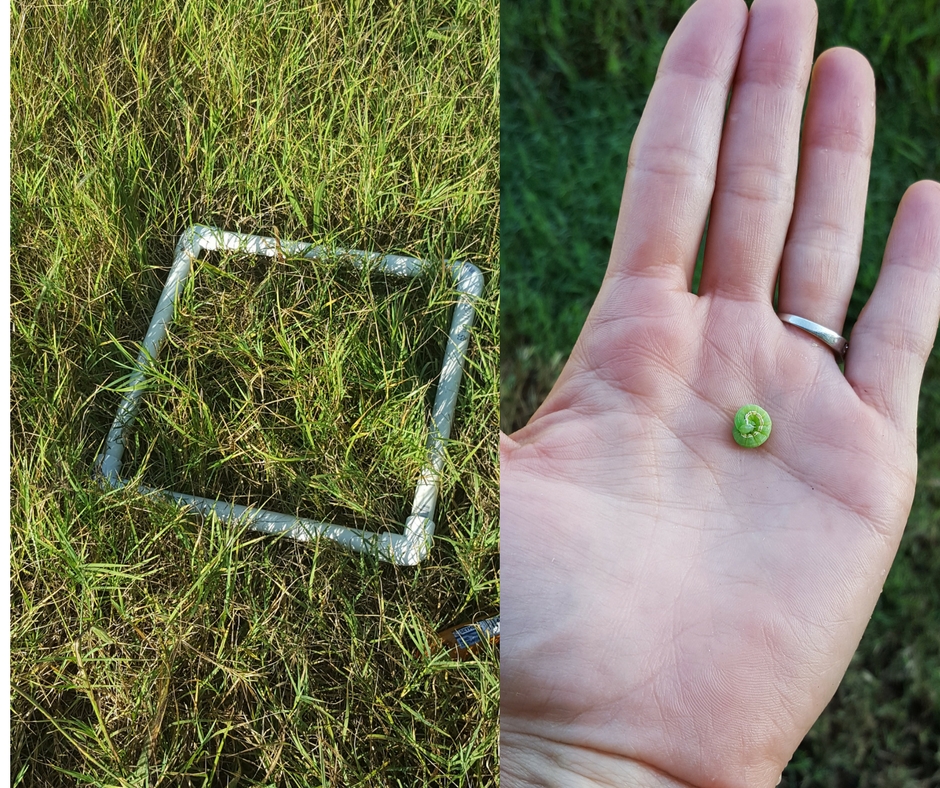Fall Armyworm Demo Conducted in Miller County
TEXARKANA, Ark. –
Miller County Agriculture Agent, Jennifer Caraway, sprayed two 2-acre plots for fall armyworms on September 1st. On Plot 1, Silencer (Lambda-cyhalothrin) was used and on Plot 2, Intrepid was used.
We counted armyworms every 5 to 7 days to check residual. Our counting dates were September 5th, 12th, 16th, and 22nd. Our counts were:
September 1st – On the Left (south) side, Silencer memo was sprayed; on the Right (north) side, Intrepid was sprayed.
September 5th – 10 counts each - Intrepid count 0, 0, 0, 0, 0, 0, 0, 0, 0 – Silencer count 0, 0, 0, 0, 0, 0, 0, 0, 0, 0
September 12th – 10 counts each - Intrepid count 0,0,0,0,0,0,0,0,0,0 – Silencer counts 0,0,0,0,0,0,0,0,1
(moth), 0
Non-treated - 7 (all sizes)
September 16th - Intrepid count 0, 0, 0, 0, 0, 0, 0, 0, 0, 0 - Silencer count - 0, 0, 0, 0, 0, 0, 0, 0, 0, 0
September 22nd – Intrepid count 0,0,0,0,0,0,0,0,0,0 - Silencer count – 0,0,0,0,0,0,0,0,0,0 - Non treated count 0, 0, 1, 1
On day 12, I only found 1 moth in the treated areas while the non-treated areas were still heavily infested.
21 days later, there are still no armyworms to be found in the treated 2 acre plots.
If you are worried about armyworms in your yard or pasture, remember, it is important to scout. Early in the morning or late in the evening versus the heat of the day is best.
Proper timing of insecticide application results in better control. In most cases, insecticide control is warranted when an average of three or more worms per square foot occurs. However, other factors, such as the size of the caterpillars and maturity of the hay crop, should be considered before making an insecticide application. For example, if a hay field is heavily infested and the grass is ready to harvest, consider cutting and baling as soon as possible rather than making an insecticide application. If the field is not ready to cut and you have more than three very small (⅛ to ¼ inch) caterpillars per square foot, do not treat before necessary. Instead, get the equipment ready to spray and monitor the field closely, because natural enemies could possibly reduce the population below treatment threshold within a short period of time. If the population is not reduced, then treat when the caterpillars reach ½ inch. Caterpillars larger than ¾ inch are difficult to kill, resulting in poor control. Fully grown caterpillars (1½ inches) are close to pupation and may have already caused most of the damage, thus an insecticide application may not provide an economic benefit. Generally, products with longer residual activity will cost more per acre. When armyworm pressure is high, longer residual activity may be worth the extra expense and save one application. Also remember, grass that has been cut, grazed or is growing very fast following an insecticide application may not have much insecticide residue left. Pyrethroid insecticides are faster acting than insect growth regulators and work well on small and medium-sized caterpillars. In general, insect growth regulators will have longer residual activity than pyrethroids. However, because insect growth regulators are slower, they should be used when the caterpillars are small. Most insecticide labels will provide a rate range (low to high). Consider using the higher rate if the armyworms are large because they are harder to kill. This information and more can be found in the University of Arkansas System Division of Agriculture publication FSA7083, by Entomologists, Kelly Loftin, Gus Lorenz, and Ricky Corder. In this publication, we are focusing on Fall Armyworms rather than True Armyworms.
By Jennifer Caraway
County Extension Agent - Agriculture
The Cooperative Extension Service
U of A System Division of Agriculture
Media Contact: Jennifer Caraway
County Extension Agent - Agriculture
U of A Division of Agriculture
Cooperative Extension Service
400 Laurel Street, Suite 215 Texarkana AR 71854
(870) 779-3609
jcaraway@uada.edu
Related Links
The Arkansas Cooperative Extension Service is an equal opportunity institution. If
you require a reasonable accommodation to participate or need materials in another
format, please contact your County Extension office (or other appropriate office)
as soon as possible. Dial 711 for Arkansas Relay.
Pursuant to 7 CFR § 15.3, the University of Arkansas System Division of Agriculture
offers all its Extension and Research programs and services (including employment)
without regard to race, color, sex, national origin, religion, age, disability, marital
or veteran status, genetic information, sexual preference, pregnancy or any other
legally protected status, and is an equal opportunity institution.
